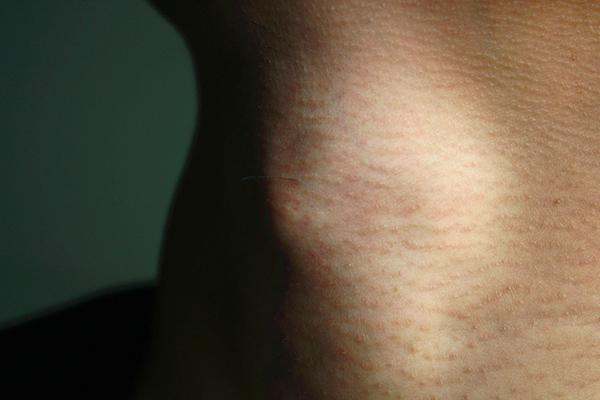The Adam’s apple, a noticeable protrusion on the front of the throat, has long been a source of curiosity and intrigue. For many, it’s a defining feature of male anatomy, but touching this sensitive area can lead to discomfort or awkwardness. In this article, we’ll explore what the Adam’s apple is, its purpose, and why it’s best to leave it alone.
What Is the Adam’s Apple?

The Adam’s apple is a prominent bump on the front of the neck, formed by the thyroid cartilage surrounding the larynx, or voice box. This feature is most noticeable in men and typically develops during puberty when the larynx grows larger. The growth causes the cartilage to protrude, creating the distinctive bump.
The name “Adam’s apple” is rooted in the biblical story of Adam and Eve. As the tale goes, Adam ate a forbidden fruit, and a piece became lodged in his throat, symbolizing the protrusion we see today.
Why Do Only Some People Have Adam’s Apples?
Not everyone has a noticeable Adam’s apple. The size and prominence depend on the growth of the larynx and the amount of cartilage surrounding it. Here’s why it varies:
- Puberty and Hormonal Changes: During puberty, boys experience significant growth in the larynx, leading to deeper voices and, often, a visible Adam’s apple. Girls also experience changes in their voice box, but the growth is less pronounced, which is why most women don’t have a noticeable Adam’s apple.
- Genetic Makeup: The prominence of the Adam’s apple is largely influenced by genetics. Some men have larger voice boxes or more cartilage, resulting in a bigger Adam’s apple.
The Role of the Adam’s Apple
While the Adam’s apple itself doesn’t serve a direct medical function, it is a visible indicator of the larynx, which plays a crucial role in vocalization. The larynx protects the vocal cords and enables us to:
- Speak
- Sing
- Whisper
- Laugh
- Shout
Having a larger Adam’s apple doesn’t improve these abilities—it’s merely a physical characteristic linked to the size of the voice box.
Why Is the Adam’s Apple So Sensitive?
The Adam’s apple is more than just a bump; it’s part of a delicate structure. Touching it can cause discomfort for several reasons:
- Proximity to the Vocal Cords: The thyroid cartilage surrounds the vocal cords, which are highly sensitive. Any pressure or tapping on this area can feel intrusive or ticklish.
- Nerve Sensitivity: The throat is rich in nerve endings, making it one of the more sensitive parts of the body. Even light contact can trigger an unpleasant reaction.
- Psychological Sensitivity: For some, the Adam’s apple is a personal or vulnerable area. Unwanted touching can feel invasive, akin to someone encroaching on personal space.
Why You Shouldn’t Touch a Boy’s Adam’s Apple

Touching someone’s Adam’s apple may seem harmless, but it’s often uncomfortable or even distressing. Here’s why you should avoid it:
- It’s Intrusive: The Adam’s apple is part of a person’s neck, a generally sensitive and private area. Touching it without consent can feel invasive.
- It May Cause Discomfort: Because of the nerve sensitivity in the area, even a light touch can cause a ticklish or choking sensation. For some, the discomfort can be severe enough to elicit a physical reaction.
- Heightened Sensitivity Over Time: Repeated touching can make someone more aware of their Adam’s apple, leading to increased discomfort and sensitivity.
- Personal Boundaries: Everyone has areas of their body that feel more private or personal. Respecting those boundaries is essential for fostering comfort and trust.
Can the Adam’s Apple Be Altered?
For those who feel self-conscious about the size or appearance of their Adam’s apple, there are surgical options available. These include:
- Adam’s Apple Enhancement: Part of facial masculinization surgery, this procedure adds cartilage to create a more prominent Adam’s apple. It’s often sought by individuals undergoing gender-affirming surgery.
- Chondrolaryngoplasty: Also known as Adam’s apple reduction, this procedure involves shaving down excess cartilage to minimize its size. However, it carries risks, such as changes to vocal ability.
While these surgeries can alter the appearance of the Adam’s apple, they are extensive procedures that require careful consideration and recovery time.
Respecting Boundaries and Understanding Sensitivity

Touching someone’s Adam’s apple might seem playful or curious, but it’s important to recognize the sensitivity of this area. Respecting personal boundaries is crucial, especially when dealing with a part of the body so closely linked to one’s voice and identity.
Instead of risking discomfort, consider engaging in a light-hearted conversation about it if curiosity arises. This way, you foster mutual respect and understanding.
Conclusion
The Adam’s apple is a fascinating and unique part of human anatomy, particularly prominent in men due to laryngeal growth during puberty. While it doesn’t serve a direct purpose, its sensitivity makes it a delicate area to handle. Touching a boy’s Adam’s apple can cause discomfort, ticklish sensations, or even feelings of intrusion, making it best to keep your hands away.
Understanding the role and sensitivity of the Adam’s apple not only satisfies curiosity but also reinforces the importance of respecting personal boundaries. So, next time you’re tempted to poke or touch, remember—it’s more than just a bump; it’s a part of someone’s identity.


